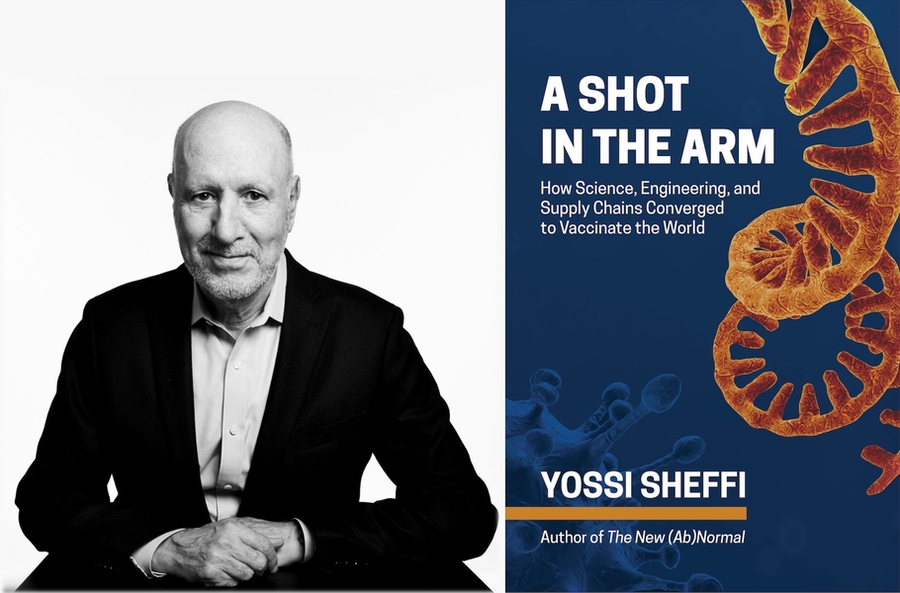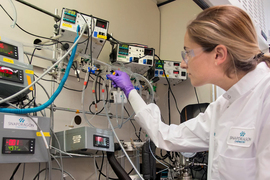The race to deliver a Covid-19 vaccine has been likened to a moonshot, but in several ways landing a man on the moon was easier. In his new book, “A Shot in the Arm: How Science, Engineering, and Supply Chains Converged to Vaccinate the World” (MIT CTL Media, 2021), MIT Professor Yossi Sheffi recounts the vaccine’s extraordinary journey from scientific breakthroughs to coronavirus antidote and mass vaccination. And he explores how the mission could transform the fight against deadly diseases and other global-scale challenges.
“The historic Apollo moonshots built a dozen or so rockets to carry astronauts to a single location. In contrast, vaccine mission teams mass-produced billions of doses of a complex medication from a standing start, and delivered them to billions of individuals across the globe,” says Sheffi. This is a story of bold innovation and risk-taking he notes, “and interdisciplinary teamwork that involved experts vital to the mission’s success, such as manufacturing engineers and supply chain managers.”
Like previous moonshot quests, this one was founded on revolutionary science. The book describes how the effort built on decades of biochemistry and microbiology research to develop Covid mRNA vaccines. The vaccines teach the human body how to recognize coronavirus invaders and neutralize them before they convert the body’s cells into virus factories.
However, a weapon is impotent without the means to make and distribute it. The book explains how governments joined forces with the scientific community and industry to fund, produce, and deliver the vaccine to a world in danger of losing the battle against the pandemic. The author characterizes this monumental endeavor as the greatest product launch in history. Along the way, the mission teams broke new ground in their respective fields.
The teams also made mistakes, and the book shows how these failures will inform future campaigns. Other obstacles in the way included disinformation, public mistrust of science and government, and political opportunism. Sheffi explores the root causes of these opposing forces and the societal implications.
“Yossi Sheffi offers strategic lessons behind the record-breaking development, production, and global delivery of the Covid vaccines and what they mean for the future,” says Bob Langer, the David H. Koch Institute Professor at MIT and co-founder of Moderna.
"A Shot in the Arm" ends on an optimistic note with a look at the Covid vaccine mission’s formidable legacy. In addition to providing templates for fighting pandemics, the effort has advanced immunology and highlighted the breathtaking potential of mRNA-based vaccines. Future vaccines could cure life-threatening illnesses including cancer, and when combined with other technologies, spur innovations in other fields such as agriculture. The book argues that the convergence of multiple disciplines, industries, and sectors — which resulted in the vaccine — provides a blueprint for humanity for tackling global challenges. These include poverty, food and water security, and climate change, particularly in getting from R&D and lab work to scaling innovations addressing such challenges.










